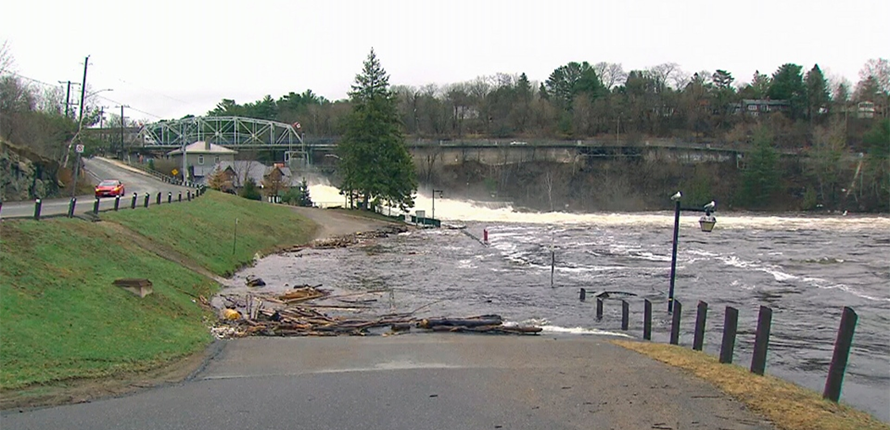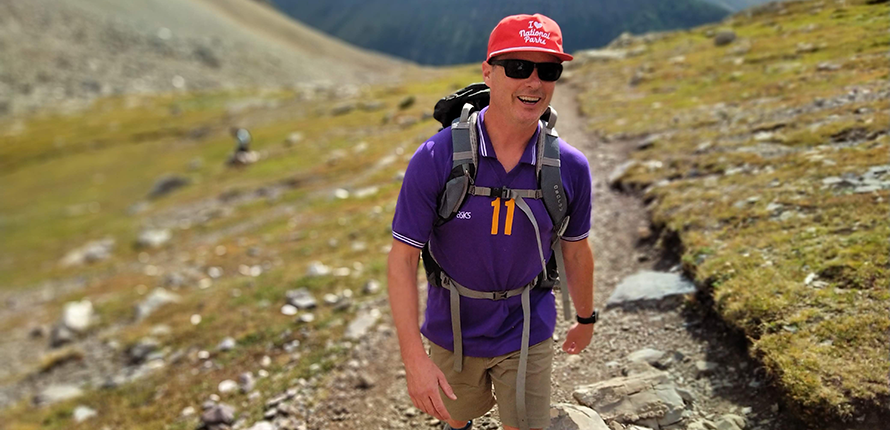We use cookies on this site to enhance your experience.
By selecting “Accept” and continuing to use this website, you consent to the use of cookies.
Search for academic programs, residence, tours and events and more.
April 21, 2020
Print | PDFWilfrid Laurier University is home to dozens of researchers studying ways to save and adapt to our warming planet. This Earth Day, we highlight five faculty members on the frontlines of the fight against climate change.
Researcher: William Quinton, Professor, Geography and Environmental Studies
What he’s doing: In partnership with the Dehcho First Nations in the Northwest Territories, Quinton co-founded the Dehcho Collaborative on Permafrost (DCoP). Together, the group is combining scientific data collected at the Scotty Creek Research Station with Indigenous knowledge to address widespread permafrost thaw in the Dehcho region. Permafrost – soil, rock or sediment that remains below zero degrees Celsius for two or more consecutive years – helps to store water on the landscape and prevent carbon from being released into the atmosphere. The loss of permafrost is disrupting the region’s ecosystems and the human activities that depend on it.
Why it matters: “The project is focused on reducing the uncertainties of permafrost thaw in one of the most rapidly warming areas on Earth, as well as improving community engagement,” says Quinton. “We need all hands on deck because, with the region warming so quickly, the questions and challenges we’re facing are truly unprecedented.”

Researcher: Brenda Murphy, Professor, Social and Environmental Justice
What she’s doing: Murphy recently completed a three-year study focused on inter-community service sharing as a way of enhancing rural climate change preparedness. With large areas and sparse populations, rural communities typically have fewer resources to respond to events such as forest fires, floods and storms – or even to plan their responses to future disasters. Along with her colleagues in the Resilient Communities Research Collaborative, Murphy developed a series of best practices to help communities prepare for extreme weather.
Why it matters: “Rural communities are stronger when they work together,” says Murphy. “Enhanced, efficient service co-operation can contribute to a sustainable and prepared infrastructure system, while also protecting the environmental capital upon which rural economies frequently depend.”
Researcher: Alison Blay-Palmer, Professor, Geography and Environmental Studies
What she’s doing: Blay-Palmer was recently named UNESCO Chair on Food, Biodiversity and Sustainability Studies and is the director of the Laurier Centre for Sustainable Food Systems. Through the UNESCO Chair, Blay-Palmer will continue to lead research teams and establish partnerships in Canada and internationally to build food systems that are fair, green, healthy, local and engaged. These initiatives engage in research around the world, from Ontario to Kenya to the Northwest Territories.
Why it matters: “Globally, there are 821 million food insecure people,” says Blay-Palmer. “Because of the COVID-19 outbreak, these numbers will balloon, and we know that proper diet helps people stay healthy. As well, up to 37 per cent of greenhouse gas emissions are tied to the current food system, while some agriculture undermines biodiversity. By growing food systems that regenerate the environment, protect and conserve biodiversity and build healthy communities, we can foster planetary health and community well-being. These are important considerations as we reflect this Earth Day and offer us a way to solve some of our most pressing challenges.”

Researcher: Christopher Lemieux, Associate Professor, Geography and Environmental Studies
What he’s doing: Lemieux’s research focuses on nature-based climate solutions. Earth's oceans, forests and other ecosystems continue to absorb about half of the carbon dioxide emitted into the atmosphere by human activities, even as those emissions have increased. Lemieux has found that restoring and protecting ecosystems can be an effective tool in reducing the impacts of climate change. By contributing to Canada’s national assessments on climate change on several occasions and by advising influential bodies such as the National Advisory Panel on Marine Protected Area Standards, he is using his expertise to advocate for a larger, better connected nature conservation network across Canada.
Why it matters: “By expanding and connecting our protected areas, there is a dual benefit of keeping more carbon in the ground and conserving our country’s biodiversity,” says Lemieux. “It would allow species to move freely in response to warming temperatures and changing habitats, while also being a low-cost tool to help achieve our emissions targets in the Paris Agreement.”
Researcher: Homa Kheyrollah Pour, Associate Professor, Geography and Environmental Studies
What she’s doing: Arctic lake ice is shrinking and the duration of ice cover is decreasing as global temperatures rise. Kheyrollah Pour and her research team travelled to Délı̨nę, N.W.T. in February 2020 and used a remotely operated vehicle to dive below the frozen surface of Great Bear Lake to collect critical information about the aquatic ecosystem. The water and sediment samples they collected, along with detailed imagery, will help Kheyrollah Pour’s team understand what’s happening under the ice during shorter and more variable winters.
Why it matters: “Understanding the role and response of lakes as the climate warms has been limited due to lack of detailed observations,” says Kheyrollah Pour. “The remote sensing technologies we’re using allow us to produce comprehensive data sets to study the environmental issues throughout cold regions.”